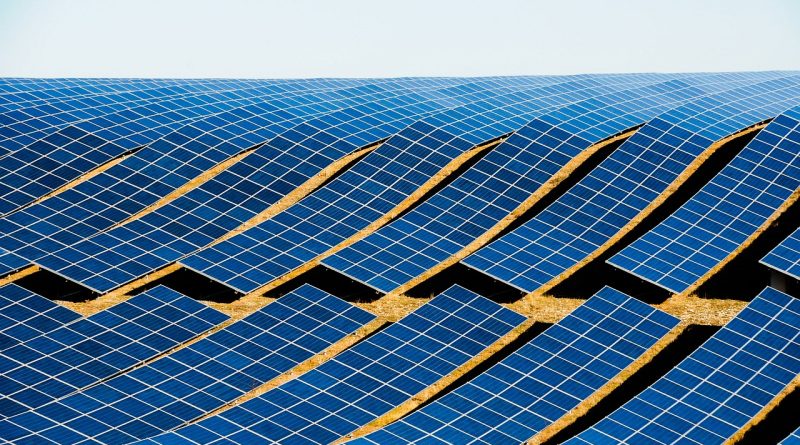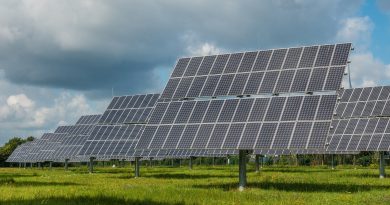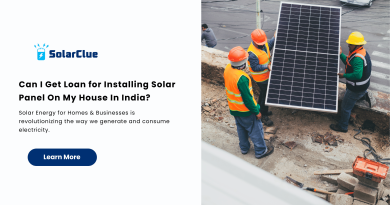Solar PV Panels: Harnessing Sunlight for Power Efficiency
Solar photovoltaic (PV) technology has made impressive strides in recent years, transforming how we generate and consume electricity. This innovative form of renewable energy harnesses the power of the sun, converting sunlight into usable electricity. As the global demand for clean energy solutions continues to rise, solar PV has emerged as a key player in the transition towards a sustainable future. In this blog, we will explore the various aspects of solar PV technology, from its working principles to its environmental benefits and applications.
Table of Contents
The Science Behind Solar PV
Solar PV technology relies on the principle of the photovoltaic effect, discovered by Alexandre-Edmond Becquerel in 1839. At its core, this phenomenon involves the generation of electricity when certain materials are exposed to sunlight. When sunlight photons strike the surface of a solar panel, they excite electrons in the panel’s semiconducting material, causing them to flow as an electrical current. This direct current (DC) is then converted into alternating current (AC) through an inverter, making it compatible with the electrical grid or directly usable in appliances.
The Components of a Solar PV System
A typical solar PV system comprises several key components that work together to transform sunlight into electricity. These components include:
1. Solar panels: Made up of interconnected solar cells, these panels are responsible for capturing sunlight and converting it into electrical energy. The efficiency of solar panels varies depending on factors like the type of cells used and the quality of manufacturing.
2. Inverters: As mentioned earlier, inverters convert the DC electricity generated by solar panels into AC electricity suitable for powering households, businesses, or feeding into the grid. They also ensure optimal power output by tracking and adjusting voltage and current levels.
3. Mounting structure: Solar panels need to be securely mounted on rooftops or ground-based structures to maximize exposure to sunlight. Proper mounting ensures that panels are at the optimal angle and orientation for capturing sunlight efficiently.
4. Batteries: Solar PV systems can be equipped with batteries to store excess electricity for later use, enabling solar-generated power to be used during non-sunny periods or at nighttime.
5. Monitoring system: A monitoring system allows users to track and analyze their solar system’s performance, providing real-time information on power generation, consumption, and potential issues.
Environmental Benefits of Solar PV
Solar PV technology offers a range of environmental benefits, making it a sustainable alternative to conventional energy sources. Here are some of the key advantages:
1. Reduced greenhouse gas emissions: Solar PV systems generate electricity without emitting greenhouse gases like carbon dioxide or methane, helping combat climate change and reduce air pollution.
2. Renewable and abundant: The sun is an inexhaustible source of energy, ensuring that solar PV systems can be installed almost anywhere and continuously generate electricity as long as sunlight is available.
3. Water conservation: Unlike fossil fuel or nuclear power plants, solar PV systems do not require vast amounts of water for cooling purposes, reducing strain on scarce water resources.
4. Minimal land disruption: Solar panels can be installed on rooftops, parking lots, or other pre-existing structures, minimizing the need for additional land use and allowing for dual-purpose utilization.
Applications of Solar PV
Solar PV technology finds application in various sectors, contributing to a greener and more sustainable world. Some noteworthy applications include:
1. Residential rooftops: Many homeowners are installing solar panels on their rooftops to generate clean electricity and reduce their dependence on the grid. This allows them to save on monthly energy bills while contributing to a cleaner environment.
2. Commercial and industrial buildings: Businesses and industrial facilities are increasingly investing in solar PV systems to meet their energy needs. Solar installations can help companies reduce operational costs, create a positive brand image, and comply with sustainability goals.
3. Rural electrification: In remote areas with limited access to the grid, solar PV systems play a vital role in providing electricity to communities. These systems can power homes, schools, healthcare centers, and various other essential infrastructures.
4. Large-scale solar farms: Utility-scale solar farms, consisting of thousands of solar panels, generate a significant amount of electricity at a centralized location. Solar farms contribute to a greener energy mix and can supplement or replace conventional power plants.
Conclusion
Optimize your energy efficiency with SolarClue® as we explore the world of solar PV panels. Discover how these panels convert sunlight into electricity, offering options like monocrystalline for high efficiency or flexible thin film for versatile installations. Harness power even on cloudy days, with installation angles and orientations tailored to your location and energy needs. Benefit from long-lasting panels with minimal maintenance. SolarClue® integrates solar PV panels seamlessly into existing systems, maximizing clean energy utilization. Explore government incentives and let our experts guide you towards harnessing the full potential of solar PV panels. Contact us for a personalized consultation and embark on a journey to power efficiency with SolarClue®.
Frequently Asked Questions
Photovoltaic (PV) panels contain cells that absorb sunlight. When sunlight strikes these cells, it creates an electric current, generating electricity.
Common types include monocrystalline, polycrystalline, and thin-film. Monocrystalline offers higher efficiency, while thin-film is flexible and lightweight.
Higher efficiency means more electricity production per unit of sunlight, making panels with greater efficiency desirable for limited space installations.
Yes, while direct sunlight maximizes output, solar panels can still generate power on cloudy days or in diffused sunlight, although at a reduced rate.
The angle and orientation are influenced by the geographical location, time of year, and specific energy needs, optimizing sunlight exposure for maximum efficiency.
Solar panels can last 25 years or more. Minimal maintenance, such as cleaning, is needed to ensure optimal performance.
Yes, solar PV panels can be integrated into existing systems, providing additional clean energy and potentially reducing reliance on conventional power sources.
Shading reduces panel efficiency by blocking sunlight. Careful placement and design can minimize shading issues and optimize performance.
Yes, many regions offer incentives, tax credits, or rebates, making solar PV panel installations more cost-effective.
Contact SolarClue® for expert guidance. Our team evaluates your location, energy needs, and preferences to recommend the most efficient solar PV panel solution, ensuring you harness sunlight for optimal power efficiency.



